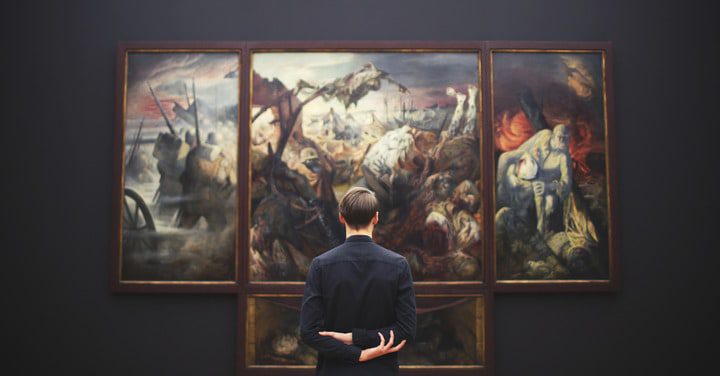Throughout the 20th century, various art movements emerged, each with its unique philosophy, techniques, and motivations. From the geometric shapes of Cubism to the irrationality of Dadaism, these movements challenged the traditional notions of art, representation, and reality. Surrealism explored dream states and the subconscious mind, while Expressionism aimed to convey emotions and reactions to the world. Meanwhile, Abstract Expressionism prioritized spontaneity and subjective experience, and Pop Art celebrated mass culture and consumerism. Minimalism sought to explore the essence of art, while Postmodernism challenged the idea of a single reality. Finally, Fauvism used bold colors and brushstrokes, and Abstract Art conveyed abstract forms rather than recognizable objects. Together, these movements innovatively marked the 20th century and revolutionized the art world.
1. Cubism
Cubism, founded by Pablo Picasso and Georges Braque in the early 20th century, is undoubtedly one of the most influential art movements of the century. This style of art is characterized by depicting objects as geometric shapes, not how they appear in reality. Cubism was a significant departure from the traditional artistic techniques that aimed to depict accurate representations of the world. Instead, Cubist artists aimed to represent the world through their interpretation of reality.
2. Surrealism
Surrealism was an artistic and cultural movement that emerged after the First World War. Surrealist artists aimed to explore their subconscious and the fantastic side of reality, depicting dream states, and creating fictional landscapes. This movement was born out of a desire to subvert the values of the bourgeois society and promote the artist’s inner-world.
3. Expressionism
Expressionism is a modernist art movement that began in Germany in the early 20th century. This style used exaggerated forms, intense colors, and emotional content to convey the artist’s feelings and reactions towards reality. Expressionist artists aim to express their inner-most emotions through their artwork often depicting the angst and despair of the modern world.
4. Abstract Expressionism
Abstract Expressionism is an art movement that emerged in the United States in the 1940s after the Second World War. This style emphasized spontaneous and automatic creation without preconceived ideas, allowing the subconscious to take over. Abstract Expressionist artists aimed to depict emotions and feelings, using color, texture, and line to create a subjective experience.
5. Pop Art
Pop Art was a cultural movement that emerged in the United States and the United Kingdom in the mid-1950s. This style sought to celebrate mass culture and consumerism while subverting the traditional fine art style, using recognizable images from popular culture. Pop Art artists explored the relationships between art and culture, often incorporating graphics, photographs, and commercial printing techniques into their works.
6. Minimalism
Minimalism, founded in the United States in the 1960s, is a style that emphasized the use of reduced elements and simplified forms to convey a message. This style sought to explore the essence of the artwork, stripped of extraneous elements. Minimalist artists commonly employed monochromatic planes and simple geometric shapes to convey a sense of purity and simplicity.
7. Postmodernism
Postmodernism is a philosophy and art movement that emerged in the late 20th century, challenging the notion of a single reality or truth. Postmodernist works typically employ multiple meanings and narratives, often parodying or subverting existing cultural works for their own purposes. This artwork was created with a sense of irony and humor, using non-linear storylines, and self-referential techniques.
8. Fauvism
Fauvism was an art movement that began in France in the early 20th century. This style emphasized the use of saturated colors and bold brushstrokes to evoke emotions and create dynamic images. Fauvist artists aimed to challenge the traditional conceptions of representational art, often using elements of abstraction to provoke the audience.
9. Abstract Art
Abstract art is a style of art that focuses on the use of forms, colors, and shapes, rather than representing recognizable objects or scenes. This style emerged as a response to the changing world in the early 20th century, where artists began to experiment with new techniques and styles independent of representational art. Abstract art allowed the artist to focus on the materials and compositions of the artwork, creating new and innovative imagery.
10. Dadaism
Dadaism is an art movement that emerged in the early 20th century, characterized by a rejection of traditional values and artistic norms. This style focused on irrationality, nonsense, and absurdity, often using found objects and everyday materials to create art. Dadaist works aimed to provoke the viewer, challenging them to question their assumptions about art and the world around them.
In conclusion, the 20th century saw a wide range of art movements and styles, each reflecting the changing cultural, social, and political environment. These ten art movements have left an indelible mark on the art world, inspiring generations of artists and challenging perceptions of reality, beauty, and representation.
